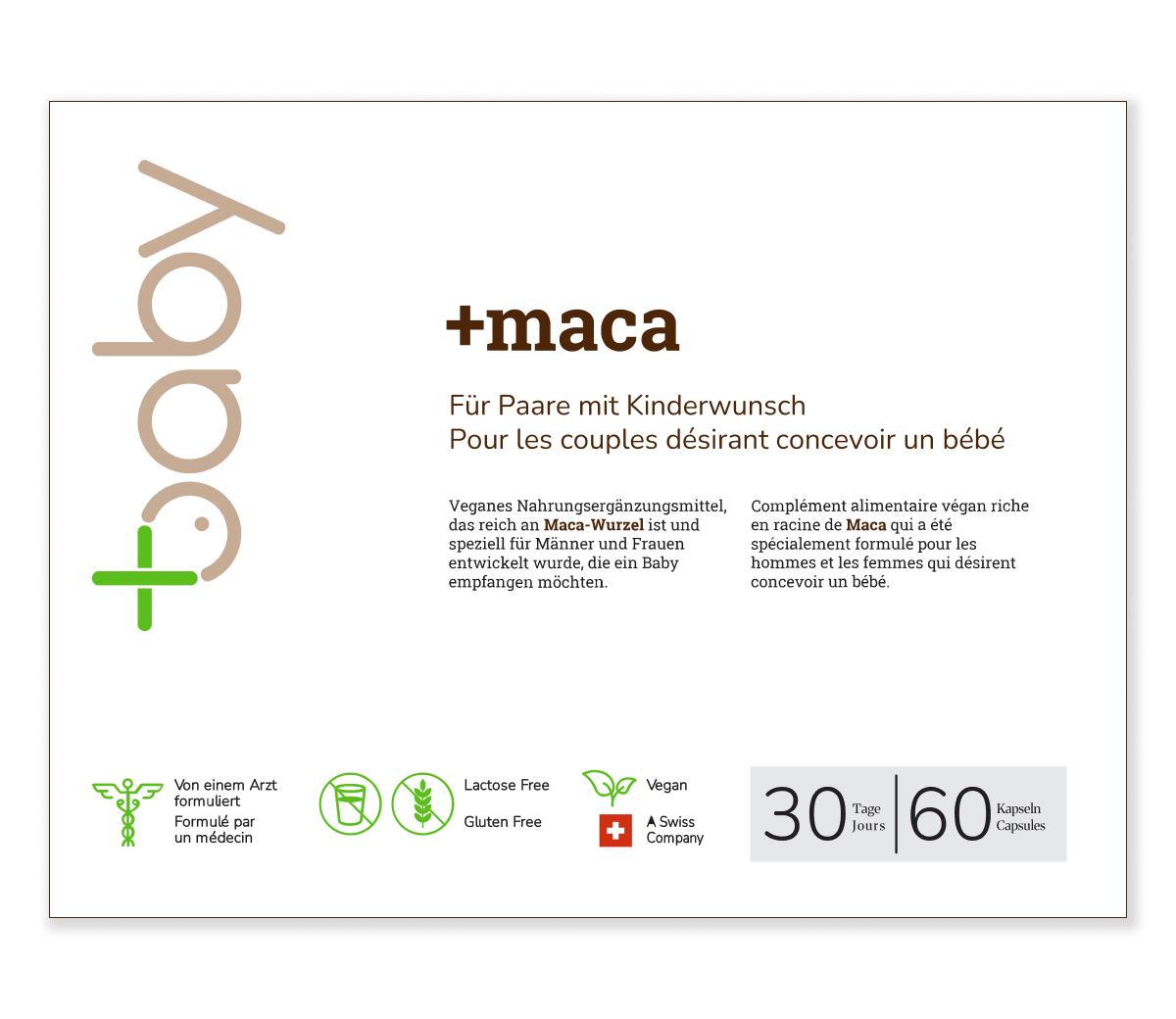Medically Assisted Reproduction (MAP) represents a major advance in the field of reproductive medicine, offering new possibilities to those struggling with infertility. The practice, which encompasses a range of techniques designed to help couples conceive a child, has given rise to ethical, legal and social debates since its inception. However, it continues to evolve and broaden the horizons of parenthood.
Table of Contents
ToggleWhat is MAP?
Medically Assisted Reproduction (MAP) is an essential approach in reproductive medicine, offering several techniques to overcome the various forms of infertility. Here is a detailed exploration of the main methods used:
Artificial insemination (AI)
Artificial insemination is a relatively simple technique in which sperm, after being prepared in a laboratory to increase its quality, is inserted directly into the woman’s uterus during her fertile period. This method is often used when fertility problems are due to cervical incompatibility or mild sperm deficiencies.
In Vitro Fertilisation (IVF)
In vitro fertilisation involves stimulating the ovaries to produce several oocytes, which are then surgically collected. These oocytes are brought into contact with sperm in the laboratory to allow fertilisation to take place. The resulting embryos are cultured for several days before being transferred to the uterus. This method is particularly effective in overcoming fertility problems linked to fallopian tubes or severe male factors.
Intracytoplasmic sperm injection (ICSI)
ICSI is an advance in IVF where a single sperm is injected directly into an oocyte under a microscope. This technique is mainly used to treat cases of severe male infertility, such as low motility or low sperm count.
Egg and sperm donation
When the couple’s gametes are inadequate for reproduction, as in cases of premature ovarian failure or extreme male infertility, gamete donation may be considered. Oocytes or sperm donated by healthy donors are used for IVF or ICSI.
Gestation Pour Autrui (GPA)
Surrogate motherhood is an option for women who are unable to carry a pregnancy for medical reasons. An agreement is made with a surrogate mother who will carry the embryo conceived by MAP. GPA is surrounded by numerous legal and ethical considerations and is not permitted in all countries.
These methods represent the main options available in the context of MAP, each adapted to specific infertility conditions. The selection of the appropriate technique depends on many factors, including the underlying cause of infertility, the woman’s age, pre-existing medical conditions, and local laws and regulations governing the use of these technologies.
Legislative and social developments
The laws governing MAP vary considerably from country to country. Some countries have adopted liberal laws allowing wide access to MAP, while others restrict its use, often due to ethical or religious considerations. However, many countries are revising their laws to reflect scientific advances and social changes.
Technological advances in Medically Assisted Reproduction
Medically Assisted Reproduction has made significant progress thanks to continuous innovation in medical technologies. These advances not only increase treatment success rates, but also offer safer and more personalised solutions for couples facing infertility.
Improved cryopreservation
One of the most significant advances is the improvement in cryopreservation techniques. Vitrification, a rapid freezing method, has revolutionised the preservation of oocytes and embryos, considerably reducing the risk of ice crystals forming and damaging the cells. Thanks to this technique, post-thaw survival rates have increased considerably, giving couples greater flexibility in planning their MAP treatments without compromising the viability of the gametes or embryos.
Genetic selection of embryos
Genetic selection of embryos through pre-implantation genetic diagnosis (PGD) is another major advance. This technology enables doctors to detect genetic anomalies before the embryo is transferred, thereby increasing the chances of a successful pregnancy and the birth of a healthy child. PGD is particularly beneficial for couples carrying specific genetic diseases, reducing the risk of these diseases being passed on to offspring.
Personalised fertility
In addition, a personalised approach to fertility has become a reality with the introduction of tailored ovarian stimulation protocols and individually adjusted hormone treatments. Using advanced algorithms and biomedical analyses, fertility specialists can now develop treatment plans that precisely match the hormonal and reproductive needs of each patient. This personalisation not only increases the effectiveness of each treatment cycle, but also minimises the risk of side effects such as ovarian hyperstimulation.
Emerging technologies
Among emerging technologies, innovations such as artificial intelligence (AI) and robotics are beginning to play a role in the MAP process. AI, for example, is being used to improve embryo selection by analysing thousands of data points to predict potential implantation success. Similarly, robotic tools now assist surgeons during oocyte retrieval procedures, increasing precision and reducing recovery times for patients.
These technological advances are radically transforming the MAP landscape, offering hope and assistance to the millions of people longing to become parents. Thanks to these innovations, reproductive medicine continues to evolve, promising even higher success rates and safer treatments for everyone involved.
Personalised treatments for medically assisted reproduction
The personalisation of MAP treatments represents a revolution in the way specialists approach infertility. This tailored approach takes into account not only physiological conditions but also the preferences and genetic specificities of individuals to maximise the chances of conception.
Genetic and biomedical analysis
The foundation of personalised assisted reproduction is based on advanced genetic and biomedical analyses that provide an in-depth understanding of the underlying causes of infertility in each patient. These analyses often include detailed hormonal assessments, genetic tests to identify specific abnormalities, and advanced ultrasound scans to observe each patient’s follicular response. By identifying the precise factors that affect fertility, doctors can develop more effective and less invasive treatment protocols.
Individualised Ovarian Stimulation Protocols
A crucial aspect of personalised assisted reproduction is the development of customised ovarian stimulation protocols. Traditionally, stimulation protocols have been standardised, but thanks to advances in the understanding of individual ovarian response, it is now possible to adjust drug doses and treatment timing for each patient. This reduces the risk of complications such as ovarian hyperstimulation, while increasing the chances of obtaining optimal quality oocytes.
Use of Technology in Personalised Treatments
The introduction of advanced technologies, such as predictive analysis software and mobile fertility monitoring applications, is playing a significant role in personalising MAP treatments. These tools make it possible to monitor hormonal status and fertility progress in real time, enabling specialists to adjust treatments according to the patient’s body’s ongoing reactions.
Impact on results
Evidence suggests that personalised MAP treatments not only improve embryo implantation success rates, but also reduce miscarriage rates and other complications associated with fertility treatments. By tailoring treatments to individual needs, doctors can offer a safer and more comfortable experience, while increasing the chances of conceiving a healthy child.
Personalised treatments in medically assisted procreation
Personalised MAP is a significant advance in the field of assisted reproduction. By taking advantage of genetic analyses, individualised treatment protocols and modern technologies, it represents a promise for many couples facing infertility, offering them solutions tailored to their unique needs.
Ethical and social debates
MAP has raised a number of ethical and social issues, particularly concerning embryo selection, donor remuneration and surrogate mother rights. Some point out that ART can lead to the commodification of the human body and the exploitation of women, while others argue that it simply offers medical solutions to fertility problems.
Ethical and social implications of genome editing in MAP
The integration of genome editing into Medically Assisted Reproduction (MAP) practices represents an innovative but controversial frontier in reproductive medicine. Although these technologies offer extraordinary possibilities for preventing genetic diseases, they also raise significant ethical and social issues.
The ethical challenges of genome editing
Genome editing, in particular through techniques such as CRISPR-Cas9, makes it possible to modify an embryo’s DNA to eliminate genetic mutations that could lead to disease. However, this ability to modify the human genome raises profound questions about the right to genetic ‘normality’ and the potential to create ‘designer babies’. Concerns include the risk of eugenic aberrations where the technology could be used to select for non-essential characteristics, such as intelligence or physical appearance.
Consent and autonomy
A central ethical issue concerns the consent of future children to these genetic modifications, since they cannot express their agreement or disagreement before conception. This raises concerns about individual autonomy and the right to an unaltered genetic identity.
Social impact and access to technologies
Accessibility of genome-editing technologies is also a major issue. There is a fear that these technologies will only be available to the most affluent, exacerbating existing inequalities in access to healthcare and assisted reproduction. This ‘genetic gap’ could have long-term social repercussions, creating a divide between those who can afford to eliminate genetic diseases and those who cannot.
Regulation and monitoring
In the face of these challenges, the need for strict regulation and ethical oversight is undeniable. It is essential to establish international standards to regulate the use of genome editing in MAP. This includes the establishment of robust ethics committees to oversee research and clinical practice, to ensure that technologies are used responsibly and fairly.
Disparities in Access to Assisted Human Reproduction: Focus on Switzerland and its Neighbouring Countries
Medically Assisted Reproduction (ART) is heavily influenced by economic and regulatory factors that vary considerably from one country to another. This section explores these disparities, focusing on Switzerland and its European neighbours.
Medically Assisted Reproduction in Switzerland
In Switzerland, MAP is regulated by the federal law on medically assisted procreation, which prohibits anonymous gamete donation and surrogate motherhood. The costs of MAP procedures can be high, but some insurances partially cover these costs, making treatment more accessible for many couples. However, strict legal regulations may limit access to certain advanced technologies such as genome editing or embryo selection.
France and MAP treatments available to Swiss residents
France offers relatively wide access to Medically Assisted Procreation, covered by the public health system, for heterosexual couples who are married or in a civil union and who have medically recognised fertility problems. Recently, the law was amended to also include female couples and single women, reflecting a move towards greater inclusivity. Debates continue, however, on issues such as surrogate motherhood, which remains prohibited.
The Swiss can travel to France for MAP treatments, which have been particularly attractive since MAP was opened up to couples and single women. However, it is important to note that treatment for foreign nationals is not covered by the French public health system, so private funding is required.
Swiss patients must comply with French legislation, which prohibits certain practices such as surrogate motherhood. They must also organise their stay in France for the duration of the treatments, which may involve several visits for follow-up procedures and embryo transfers.
Germany and medically assisted procreation for the Swiss
In Germany, MAP is also available, but is governed by strict laws that prohibit surrogate motherhood and restrict certain forms of gamete donation. Couples must be married to access treatments funded by health insurance, which excludes unmarried couples and single people from subsidised access to these technologies.
Swiss residents can also travel to Germany for MAP. However, restrictions similar to those in Switzerland, such as the ban on surrogate motherhood and anonymous gamete donation, limit the advantages of choosing Germany over Switzerland, except for reasons of proximity or preference for specific practitioners.
Patients must be prepared to undergo treatment according to strict German protocols and may need to justify their marriage if this is required for access to subsidised treatment.
Spain and Medically Assisted Procreation for the Swiss
Spain is known for its liberal laws on MAP, allowing anonymous gamete donation and surrogate motherhood under certain conditions. This has made Spain a popular destination for fertility tourism, attracting couples from across Europe and beyond who are looking to bypass the tighter restrictions in their home countries.
Spain is a popular destination for fertility tourism because of its liberal laws on MAP. The Swiss can access services such as anonymous gamete donation and surrogate motherhood, which are not available in Switzerland.
It is relatively straightforward for Swiss nationals to plan treatment in Spain, with clinics accustomed to receiving international patients. Costs may be higher because of the private nature of treatment for foreigners.
Portugal and Medically Assisted Procreation for the Swiss
In Portugal, MAP is available to all couples and single women, and the country has recently opened up access to Medically Assisted Procreation to female couples. Gamete donation must be non-anonymous, which guarantees the right to information for children born using these methods. However, treatments are not always covered by the public health system, which can make costs prohibitive for some people.
Portugal, which has recently extended access to MAP to all types of family, is another viable option. Gamete donation is possible but must be non-anonymous, which may be a deciding factor for some.
Swiss residents will have to navigate a system where treatments are not generally subsidised for non-residents, which requires significant financial and logistical planning.
Recent studies on Medically Assisted Reproduction
A recent study in the field of Medically Assisted Reproduction (MAP) examined the benefits of recombinant luteinising hormone (rLH) supplementation during MAP cycles. The study found that the use of rLH in combination with other fertility hormones can improve outcomes for certain groups of women undergoing MAP, such as those over 35 years of age or those considered to respond poorly to standard treatments. Specifically, the addition of rLH promoted oocyte maturation, leading to better quality embryos and improved implantation rates in these subgroups (SpringerOpen).
In addition, another study focused on the effects of a lifestyle intervention programme for couples undergoing MAP treatment. The results suggest that interventions targeting lifestyle improvements, such as diet, physical activity and stress management, can positively influence MAP outcomes. This includes an increase in the number of oocytes collected, improved sperm parameters and higher pregnancy and live birth rates (BioMed Central).
The Future of Medically Assisted Reproduction
As medical research advances, new techniques and technologies are emerging to improve MAP success rates and reduce risks for patients. Advances such as egg cryopreservation, genetic selection of embryos and personalised fertility treatments promise to open up new possibilities for those seeking to become parents.
Ultimately, Medically Assisted Reproduction is a complex field that raises fundamental questions about human reproduction, bioethics and reproductive rights. As science and society continue to evolve, it is likely that the debate on ART will only grow in importance and complexity.
Conclusion on Medically Assisted Reproduction
An in-depth exploration of assisted reproductive technologies (ART) not only reveals the extent of scientific advances in the field of reproduction, but also highlights the growing importance of personalised interventions tailored to the specific needs of couples facing infertility. Techniques such as artificial insemination, in vitro fertilisation (IVF), intracytoplasmic sperm injection (ICSI) and surrogate motherhood (SCM) offer various options for overcoming the obstacles to natural conception.
Recent studies highlight the effectiveness of innovative supplements such as recombinant luteinising hormone (rLH) supplementation, which is particularly beneficial for specific groups such as women over the age of 35 or those with insufficient response to standard treatments. These biological advances, combined with lifestyle interventions, show that improving the results of MAP can often depend on a holistic approach that incorporates both medical treatments and behavioural and environmental modifications.
MAP is therefore a window on the potential of medical technologies to transform lives, while raising important ethical and legal issues that require ongoing reflection and in-depth debate. Regulations vary considerably from country to country, reflecting different ethical and cultural perspectives on assisted reproduction. This means that future parents, doctors and legislators need to navigate a complex landscape of medical, moral and legal choices.
In conclusion, ART is not just a set of medical techniques; it is an intersection of science, ethics and the deep human desire for parenthood. As science advances, it is imperative that we continue to evaluate and adapt practices to ensure that the benefits of MAP are accessed in a fair and responsible manner, while respecting the dignity and rights of all individuals involved.








